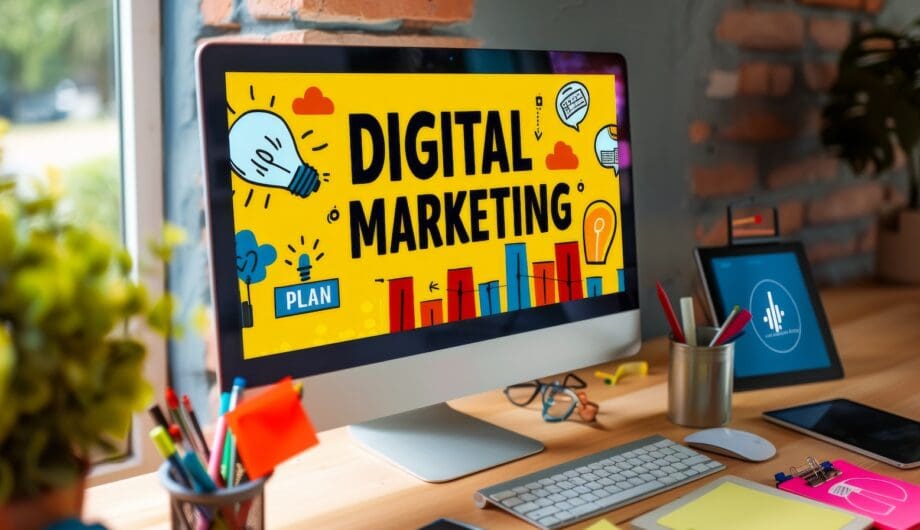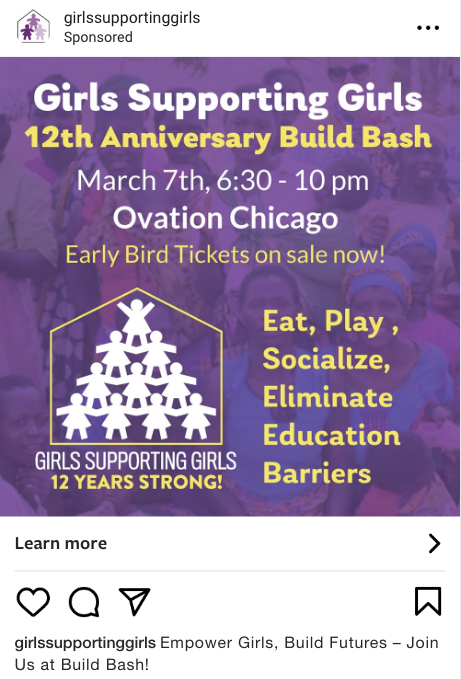
Website design and digital marketing: two great tastes that taste great together. And I’m dating myself with that joke. Only Generation X and above will understand. Sorry Millennials. (If you don’t get the reference, check out this commercial on YouTube.)
In today’s post, I want to talk about the connection between website design and digital marketing. A lot of folks believe if you build it, they will come. And on the flip side, there are people who think paying for digital marketing services is all you need to get more customers, and that how their website design looks isn’t that important. But I’m here to tell you that these are two different things that are connected in many important ways, both relying on the other to work.
If you do just digital marketing, and send potential customers to a poorly designed website, it’s much less likely that those visitors will turn into customers. And if you just create a new website, but don’t do any digital marketing, you are less likely to get new customers to your website. So it can be very important that you engage in both website design and digital marketing in conjunction, so you can get the best results.
What is digital marketing?
Digital marketing is the promotion of brands, products, and services using the Internet and other forms of digital communication. It encompasses a wide range of strategies and channels designed to connect with potential customers where they spend their time online.

Here are some examples of digital marketing.
- Search Engine Optimization (SEO): Optimizing website content and technical aspects to rank higher in search engine results (like Google) and drive organic (unpaid) traffic.
- Pay-Per-Click (PPC) Advertising: Running paid ad campaigns on search engines (e.g., Google Ads) or other platforms where you pay a fee each time your ad is clicked.
- Social Media Marketing: Using social media platforms (Facebook, Instagram, LinkedIn, TikTok, etc.) to build brand awareness, engage with audiences, and drive traffic or sales through organic posts and paid ads.
- Content Marketing: Creating and distributing relevant content (blog posts, videos, infographics, e-books, podcasts, etc.) to attract and retain a clearly defined audience and establish thought leadership.
- Email Marketing: Building email lists and sending targeted messages, newsletters, promotions, and personalized offers to nurture leads and build customer loyalty.
- Mobile Marketing: Reaching audiences on their mobile devices through text messages, mobile apps, or mobile-optimized websites and ads.
- Affiliate Marketing: Partnering with other individuals or businesses (affiliates) to promote your products or services in exchange for a commission on sales.
- Influencer Marketing: Collaborating with individuals who have a strong following in your target market to promote your brand.
You don’t have to participate in all forms of digital marketing to see success, but it’s important that you work in some way toward drawing traffic to your website if you want to see an increase in conversions. (A conversion occurs when a visitor to your website or digital platform takes a desired action, such as clicking your phone number to call, buying a product, or submitting your contact form.
The role of your website design in digital marketing
How you measure success of your digital marketing campaign is important, and one way people measure success is by how much traffic is being drawn to their site. And that is important, don’t get me wrong. You have to get your website in front of people if you want to make progress. But what good is it if 1000 new visitors get to your website, and none of them contact you or buy from you? That’s wasted time and/or money in marketing. Your website design is directly connected to whether people take the next step and convert.
If you start a campaign and see a lot of traffic coming to your site, but aren’t seeing conversions, that means the interest is there, but that something about your website is stopping them from taking the next step. What could it be? Here are some things you may need to consider when trying to sort out why your website isn’t converting.
Poor User Experience
- Slow Load Times: This is perhaps the biggest conversion killer. If a website takes more than a few seconds to load, visitors will get impatient and leave. Studies consistently show a direct correlation between page load speed and bounce rate/conversion rate. Try your website out on your computer, have friends test, try on your phone. Is it fast? If it’s not, work on that.
- Complicated or Confusing Navigation: Visitors should be able to find what they’re looking for intuitively. If menus are cluttered, labels are unclear, or the site structure is illogical, users will quickly get lost and frustrated.
- Non-Responsive Design / Poor Mobile Experience: With a significant portion of web traffic coming from mobile devices, a website that doesn’t adapt well to different screen sizes (tiny text, huge images, elements overlapping) will deter conversions on smartphones and tablets.
- Cluttered Layout and Visual Overload: Too much text, too many images, too many pop-ups, or an overall chaotic design can overwhelm visitors, making it difficult to focus on key information or calls to action. White space never killed a conversion.
- Links or Functionality: Non-working buttons, broken images, or forms that don’t submit correctly immediately erode trust and prevent users from completing their desired action.
- Lack of Accessibility: If the website isn’t designed with accessibility in mind (e.g., poor color contrast, lack of alt text for images, reliance on mouse-only navigation), it alienates a significant portion of potential users.
- Too Many Choices (Paradox of Choice): Presenting visitors with too many options can lead to decision paralysis. Simplify choices and guide users toward the most important actions. Most visitors, if you are lucky, are going to take just ONE action when they land on your website. Make a decision on what action you want them to take, and focus on driving traffic into that one goal.
- Unoptimized Forms: Long, complicated forms with too many required fields, unclear error messages, or a lack of auto-fill features can be a major barrier to lead generation or sign-ups.
- Lack of Mobile Payment Methods: If you sell products on your website but don’t have Apple Pay or Google Pay set up, do that NOW. There is nothing more frustrating than shopping on your phone and then getting to the checkout and having to manually type in a credit card number. Don’t make it hard on people.
Lack of Trust and Credibility
- Lack of Security (No HTTPS/SSL Certificate): If your website doesn’t have an SSL certificate (indicated by “HTTPS” in the URL and a padlock icon), browsers will often warn users that the site is not secure, especially for pages involving personal information or payments. This is a huge red flag for visitors.
- Outdated or Unprofessional Design: A website that looks old, cheap, or amateurish immediately raises questions about the professionalism and reliability of the business. Does your website look like your kid made it? If it does, considering looking into professional web design services to make your website shine.
- Missing or Hard-to-Find Contact Information: If visitors can’t easily find a phone number, email address, or physical address, they may assume the business is not legitimate or responsive.
- Lack of Social Proof: Absence of testimonials, customer reviews, case studies, trust badges, professional certifications, or media mentions can make a business seem less credible.
- Generic or Low-Quality Images: Stock photos that are obviously generic or images that are pixelated and unprofessional can undermine the authenticity of your brand. Studies show that people really prefer real images of your business, services, and products. I know it can be a pain to get those photos taken, but over time it will be well worth it.
- Over-the-Top or Unsubstantiated Claims: Making bold claims without providing evidence or guarantees can make visitors skeptical.
Unclear Messaging and Value Proposition
- Vague or Missing Value Proposition: New visitors need to quickly understand what your business offers and how it benefits them. If your unique selling proposition (USP) isn’t clear and prominently displayed, they won’t see a reason to stay.
- Weak, Confusing, or Missing Calls to Action (CTAs): Users need to be told exactly what you want them to do. CTAs that are generic (“Click Here”), hidden, or too numerous can lead to confusion and inaction. Don’t assume people will know what the next step is – be sure to clarify that for them in easy to understand terms.
- Irrelevant or Low-Quality Content: If the content on your site doesn’t address the visitor’s needs, answer their questions, or is poorly written/structured, they’ll assume your offerings aren’t for them.
- Mismatch Between Ad/Search Query and Landing Page: If a user clicks on an ad or search result expecting one thing but lands on a page that is irrelevant or doesn’t deliver on that promise, they’ll immediately bounce. Make landing pages relevant to your ads.
- Lack of Focus: Trying to convey too many messages or offer too many things on a single page can dilute the main purpose and confuse the visitor.
- Industry Jargon: Using highly technical terms or internal company jargon that new visitors won’t understand can make your content inaccessible and off-putting.
Hopefully now that you’ve read this, you’ll see that the link between website design and digital marketing is important, and one without the other won’t give you as many benefits. Do you need help with your website or with digital marketing? Request a quote today and we can help!
Amy Masson
Amy is the co-owner, developer, and website strategist for Sumy Designs. She's been making websites with WordPress since 2006 and is passionate about making sure websites are as functional as they are beautiful.
